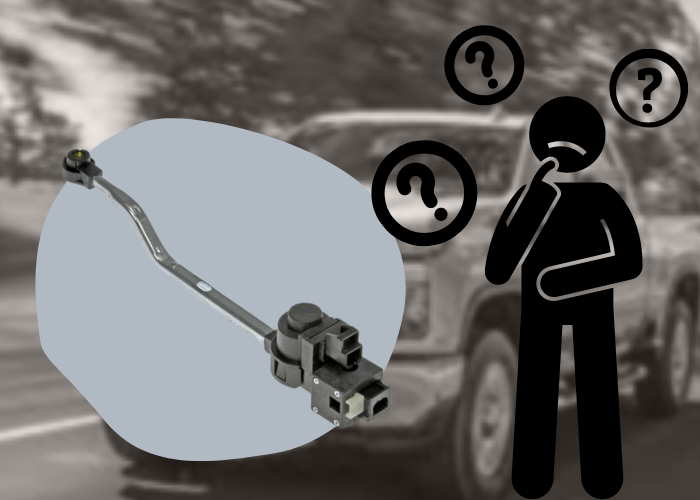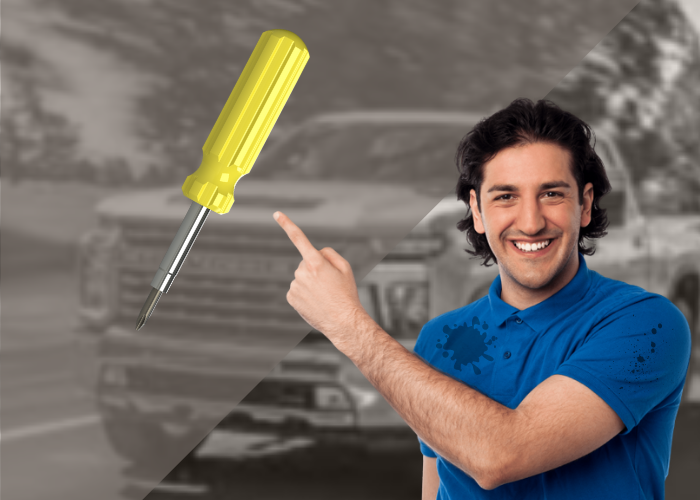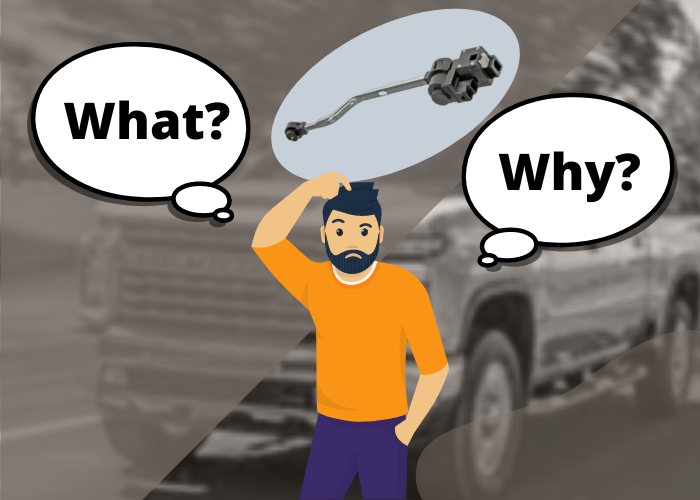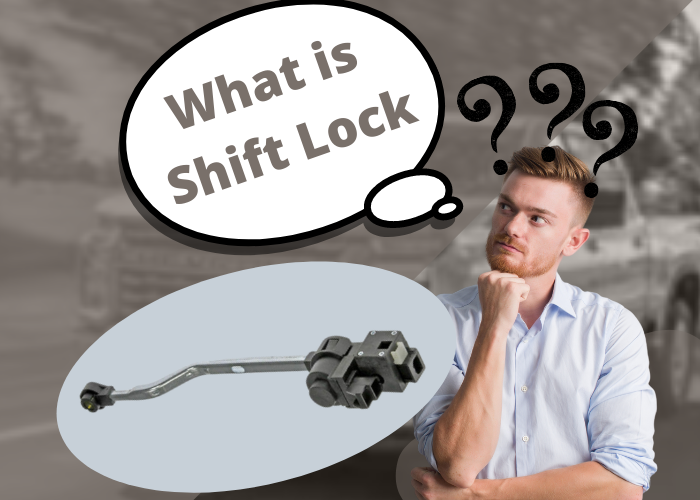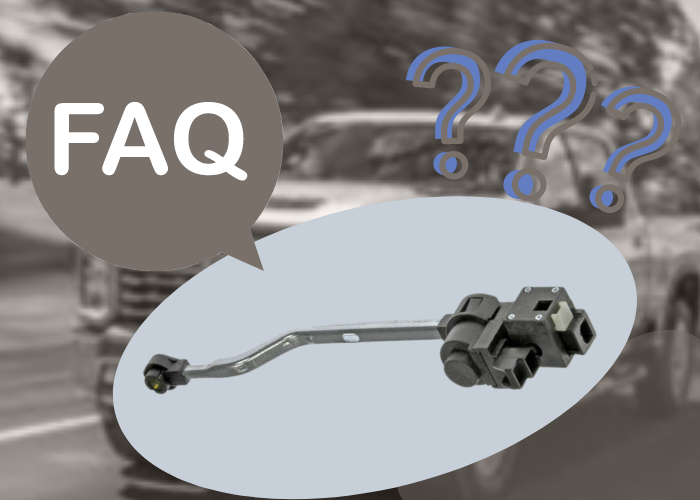A shift interlock solenoid is positioned below the shifter console by the side of the shifter lever. Accessing the Silverado shift interlock solenoid requires you to take off the center console.
There is a need to consider Silverado shift interlock solenoid bypass by connecting standard light bulbs to its circuits appearing from the PCM.
It will connect to the bulb’s other side to ignition B+. Thus, these light bulbs will stimulate the solenoids, as they will work as a load.
Table of Contents
Silverado Shift Interlock Solenoid Bypass: How to Do
The main components are controlling the shifter unlocking and locking features are the vehicle ignition switch, and the shift interlock solenoid.
As well as, the stoplight switch or the brake light. As these components fail, you are unable to move the shifter.
Additionally, in case the battery of the vehicle is dead, it adds to more trouble.
There are possibilities that the components fail. If it happens, moving the shifter is impossible from its park. Here are a few steps to follow:
Step 1: Set the emergency brake
The emergency brake is popularly referred to as a parking brake. It is another system to keep or hold the vehicle in place.
First, set the emergency brake. It implies the brake application is to the rear two wheels. However, the emergency brakes vary.
New cars feature emergency or parking brakes in the form of switches or buttons. The older cars or the manual transmission cars feature mechanical brakes.
It comes as a pedal activation by foot or lever activated by the right hand of the driver.
Step 2: Insert key
The next step after setting the emergency brake is to insert the car key into the ignition. You can turn it ON or keep it in a running position.
You need not start the engine, but keeping it in the ‘On’ position is compulsory.
Step 3: Remove cap
The third step is to identify the slot for shift lock override located near the shifter lever. It is positioned on a gear stick, and a plastic cap is fitted on the slot.
It is a must to now remove the cap.
Step 4: Insert Screwdriver
Into the shift lock override slot, you can put in anything, a nail file, a key, or some screwdriver. You can insert any object of a similar shape and push it down to hold.
As you pursue holding the mechanism of shift override, you may depress with caution the brake pedal.
Step 5: Move the shifter
Finally, take hold of the shifter and thrust the release button that is positioned on the shifter. Do it as a normal course of action and move to the desired gear, the shifter.
On completing these steps, move the shifter to its disengaged position and set out or initiate the engine.
Getting stuck with shift interlock is possible all of a sudden, and here are a few checklists to avert this issue:
- Park carefully on an incline or a hill, as it is the point creating the shift interlock issue. It happens when you are unable to properly park the vehicle.
It rolls as you release the brakes into park mode after shifting. Thus, the car weight entirely transfers to the parking gear, and the pawl averts from retracting the gear.
- One trick to avoid getting stuck in the future in such a situation is not to take off your foot from the brake. Avoid taking away your foot before you apply the emergency brake.
Take off your foot and move into the park the shift. Thus, your car will hold the weight with the parking brake, and your car will stay steady.
- Also, check the brake light, ensure it is plugged and functioning. There is a link between mechanisms, shift interlock, and the switch.
Checking the switch is working is helpful to avert Silverado shift interlock solenoid bypass.
Shift Interlock Solenoid Chevy: What & Why?
Shift interlock solenoid chevy is a safety feature. It averts drivers from switching while driving reverse. The car, before the driver switches gears, should come for a full stop.
The shift interlock solenoid Chevy is a safety mechanism part. However, the shift-interlock-solenoid works in addition to its brake light and disengaged safety switch.
Additionally, the shift interlock solenoids represent cylindrical coils in a metal wire carrying electric currents. In case the solenoid fails to get a signal, it will not release the shifter.
Therefore, the shifter interlock solenoid averts from Park to Drive shifting without hitting the brake.
The solenoid gets a signal on pressing the brake pedal and it informs to release on the shifter the mechanical lock.
In this way, the components controlling the shifter include the brake and stop lights, the shift interlock solenoid, and the ignition switch.
A Complete Guide on the Shift Interlock Solenoid Replacement
The solenoid is the gadget used in the vehicle’s automatic transmission. It stops shifting the vehicle while parking when the ignition is on and the brake does not get engaged.
A solenoid converts into mechanical energy from electrical energy. It is an electrical component used as a device for locking.
It runs using the car battery and is designed as a safety device to produce no unwanted surprises. Nevertheless, the shift interlock solenoid is an item that wears.
It means it does not last all your life. It is certain to deteriorate and to fall over time.
In case, there is trouble in shifting beyond the park, it means the shift lock solenoid is an issue and needs replacement.
Steps to shift interlock solenoid replacement
Step 1: The location of the shift lock solenoid is close to the transmission lever. It is a technician’s job to remove from the center console panel enveloping the shift lever so that access to the component is possible.
Step 2: On finding the location, remove the shift lock solenoid. Fit the new shift lock solenoid.
Step 3: Ensure the new solenoid fits properly, check and test the circuit.
Step 4: Fix back the center console panel into place.
Step 5: Check the transmission lever operation.
Remember: Without fail, check, there is the power to the vehicle and conclude. Understand what is stopping into drive, is it the shift lock solenoid or just a dead battery.
What is Shift Lock?
It is a button on the lever that a driver uses to fasten the gear lever. As the driver parks a car, he switches to the parking option, but the lever is movable only on releasing the shift lock.
There is no safety concern or issue, but the vehicle cannot be used when the shift interlock solenoid fails to work.
It means the solenoid needs replacement so that it is apt for normal operation.
- Manual operation- The shift lock in a manual car has a clutch to use each time the driver uses gear shifting.
- Automatic operation- The shift lock is a mechanism in an automatic transmission, and the button is on the gear lever. The working is not the same as a manual transmission.
Shift Lock Release Button: What & Why?
The Shift Lock Release refers to the safety function enabling one o move your car as you cannot shift the gear settings.
The feature of shift lock release permits the driver to opt for automatic transmission available options. The button of shift lock is on the gear selector lever top.
With it, drivers can lock to the desired option the gear.
- Park and lock– With the driver parking the car, the lever of the gear selector are into a park and it is locked. The driver is unable to move the lever.
- Release of Shift locks. The brake pedal connects to the shift lock release. As the driver presses the pedal down, there is an activation in the shift lock circuit. Thus, the circuit stays closed.
Shift Lock Release Button Not Working: Behind the Reasons & Solutions
The mechanism of the shift lock fails in many ways and it may cause problems in the parking brake or during emergency brake application.
Watch for these symptoms, if you suspect a shift interlock solenoid issue. The shift lock release button fails to work for these reasons:
The vehicle cannot shift out from its park
The vehicle cannot shift out when a shift interlock solenoid is bad. Even if you have on the brake pedal your foot, it is of no use.
If this happens, you cannot take your vehicle anywhere. There is a shifter release button, and it needs to move. Call a mechanic to replace the shift interlock solenoid.
Dead battery
The vehicle fails to shift out of the park; it also may be due to the dead battery. It means to check before hiring a mechanic.
If your vehicle does not start, lights fail to come, and electrical parts stop working, it is a dead battery issue.
It has nothing to do with your Silverado shift interlock solenoid bypass or replacement. It means you save a lot of hassle and time. Just jump to your battery taking help from a mechanic.
Thus, shift to drive from the park once the battery jumps to life. The dead battery means there is no power flow, and the shift lock interlock solenoid fails to release.
Brake pedal fail
The brake pedal may fail if the wiring fails. It means the power does not reach the solenoid. Thus, it hinders the working of the shift lock release button.
How to Understand If the Shift Interlock Solenoid is Wrong
Knowing the shift interlock solenoid is bad revolves under three signs:
- Unpredictable Gear Shifts – Transmission solenoids go bad with unpredictable gear shifting.
As you are driving at a speed, suddenly the car jumps to another gear and this causes stress to the vehicle.
During such shifting, the solenoids close or open without getting from the transmission computer signal.
An unpredictable gear shift stalls the vehicle and requires a professional transmission.
- Failing to Downshift- A solenoid is broken down causes transmission. It may arise due to physical damage or bad wiring hindering the solenoid from getting electrical signals.
Even some foreign matter gets stuck; it will prevent the solenoid from shifting.
- Delays in Shifting- Moving between gears are pressure changes causing solenoids movement. Thus as solenoid ages, there is a lag in performing the instructions.
There is a gap, some lost power, and sluggish solenoids.
Common FAQs for the Silverado Shift Interlock Solenoid Bypass
Q: Where is the location of the shift interlock solenoid?
The location of the shift interlock solenoid is beneath the right shifter console along with the shifter lever. To access it, removing the center console is a must.
Q: Why my car is not able to budge from the park?
The shifter fails to come out of the part, and it is a problem. The shift or brake interlock gets stuck.
Parking on a hill or an incline position causes the shifter to get stuck in the park position, and it fails to shift out of the park.
Q: What is the reason for the gear shift to stick in reverse?
A reverse transmission or another gear gets stuck when the clutch cable fails to extend as required. One remedy is pulling the clutch pedal up.
There is the possibility that the cable may be damaged over the year by grime, dust, or overuse
Q: What happens as a shift solenoid is bad?
A bad shift solenoid causes a lack of pressure and it results in delayed, soft o hard shifts.
Therefore, a bad shift solenoid causes transmission slippage, such that the engine revs faster, but the speed of the car is the same.
Q: What are bad solenoid signs?
The bad solenoid signs are:
- Engine fails to start or crank
- Engine cranks slowly
- Started spins without engaging with rear-wheel fully
- No clicking noises as you start the engine
Q: What does a bad solenoid do, does it drain a battery?
A bad solenoid that does not give enough electrical contact within produces sound, and it works on the battery giving low voltage.
Thus, there is not enough power to initiate an engine.
Q: What can you do to fix a starter solenoid?
A starter solenoid activates the starter motor as it receives from the ignition key an electric signal into a high-voltage signal.
One alternative is to change it with a fresh starter, but it is not the only option. The solenoid is repairable like other components, and thus you can save a lot of money.
Q: What does the dashboard brake light do?
The light that appears on the dashboard indicates your parking brake is on and functional.
Q. What is the variation between an Emergency and a parking brake?
The emergency brake is popularly referred to as a parking brake, and it is correct technically. If your braking system primarily fails, use the parking brake for an emergency stop.
It is impossible with modern cars featuring electronic parking brakes.
Q. What is the emergency brake’s exact function?
Emergency brake does help when parking brakes do not provide immediate stop offering relief.
Verdict
One of the gizmos of Silverado shift interlock solenoid bypass is paid attention to only when it stops functioning.
It is a small mechanism connecting your transmission locks and the brake pedal that goes into drive.
The shift lock solenoid may fail with wear and age, and you may get stuck in the park position. If so, there is a need for replacement.


